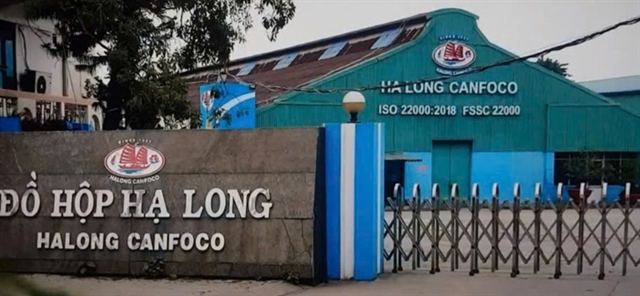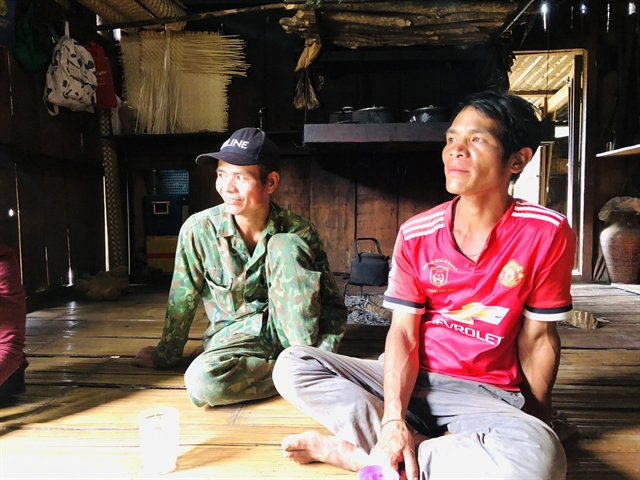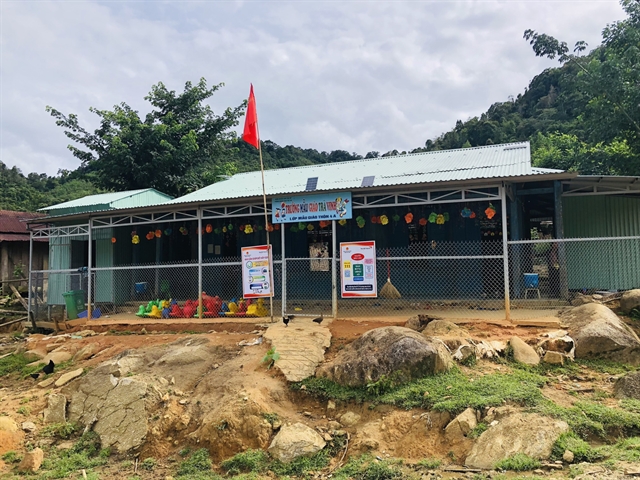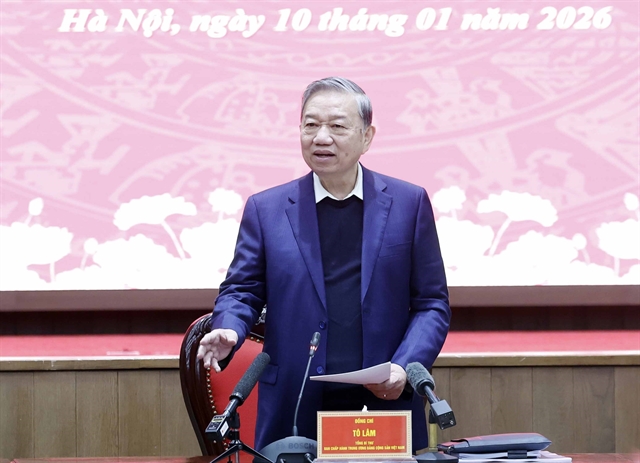 Society
Society


|
| A corner of Village 3. — Photos congluan.vn |
QUẢNG NAM — For many years, hundreds of households in the central province of Quảng Nam have held onto a glimmer of hope for basic infrastructure improvements.
About 238 households with more than 1,000 residents from the Ca Dong and Xơ Đăng ethnic communities, living in Village 3, Trà Vinh Commune, Nam Trà My District, have faced difficulties in living in homes straddling the administrative boundaries of Kon Tum (Tây Nguyên) Central Highlands Province.
At first glance, Village 3, with its picturesque houses, is hidden beneath the shade of cinnamon trees.
However, life within the village presents a different story: cramped living conditions, dirty roads, no electricity, roads and phone signal, the online portal of Nam Trà My District reported.
The journey from the centre of Trà Vinh Commune to Village 3, though merely ten kilometres away, takes nearly an hour due to the treacherous and narrow road with deep ruts filled with dust from passing vehicles.
During the rainy season, this road becomes a muddy and slippery ordeal, doubling the travel time.
Hồ Văn Gương, Secretary of the communal Youth Union, said he often has to go to the village three times a week to work with the local union members and help local people.
Sometimes, he had to leave his motorbike on the side of the road because the chain or the tire broke as it could not withstand the harsh conditions after continuously going in and out of the village.
"As long as there's no road, the officials and the locals cannot escape hardships. It takes a lot of time travelling on the small dirty roads to reach the commune centre to sell the agricultural products we grow to earn money. Students face even greater challenges. Two-thirds of the road leading to Village 3 is situated on the land of Kon Tum Province," Gương said.
With no meeting room available, both local residents and the village's officials are compelled to gather in the village head's house or at a local resident's home to discuss communal matters.
Hồ Văn Tấn, 40, describes how life has become considerably more challenging.
"Our life is much more difficult when there are regulations on the administrative boundaries between the two provinces. We can no longer cultivate the land we used to work on because it now belongs to Đắk Nên Commune of Kon Tum Province."
The people of Village 3 are stranded between two administrative regions, each with strong arguments about their territorial boundaries.
According to a local resident, Nguyễn Minh Hải, the legal administrative boundary belongs to the Kon Tum Province, but the Trà Vinh Commune's people have lived here for generations, the land was developed and managed by the people living here for a long time.
The Secretary of the Nam Trà My District Party Committee, Lê Thanh Hưng, explained that Village 3 belongs to Đắk Nên Commune, Kon Plong District, Kon Tum Province, according to the legal administrative boundary.
"This is a region with overlapping administrative borders. The local population falls under Nam Trà My District's management. Most of the residents' lives are difficult, and it's very challenging to implement support policies. The greatest hardship for the locals today is the lack of roads and the instability of the local schools."
"We plan to support the people in self-repairing roads and providing electricity from solar energy or hydropower to improve their living conditions," Hưng said.
Given the village's remote location and the limited investment in infrastructure, residents mainly rely on self-generated electricity from water sources or solar energy. To make phone calls, they must climb a high mountain to capture a faint mobile signal.
In the past, due to the lack of electricity, Hồ Văn Thông's family had to use firewood to light up his home. At night, aside from the flickering light of the firewood, the village was enveloped in darkness.
The lives of the villagers remain unchanged.
"In 2010, we bought small hydropower turbines and placed them in the stream that flows through the village to generate electricity for lighting. Families that could afford it purchased their own turbine to install in the stream. As for families like mine, we pooled resources from 3-4 households and shared a single turbine. The electricity from these small turbines is primarily used for charging phones and lighting. If a household has a TV, they have to choose between turning on the light or the TV - you can't have both," Thông told Tuổi Trẻ (Youth) newspaper.

|
| Despite the challenges, local residents are determined to remain as their deep-rooted connection to this land spans many generations. |
Nguyễn Xuân Điều, aged 30, is also in the same situation.
Due to the poor transportation, villagers had to manually create pathways and construct makeshift bamboo footbridges to reach the commune. It wasn't until 2008 that a few households were able to save up for motorcycles, but they still had to travel on those roads.
"The roads and makeshift bridges are constructed by the villagers themselves, so they are of poor quality, and many vehicles get damaged. The only location with a phone signal for the entire area is on top of that hill. Anyone who needs to make a call has to climb up there, and the signal is often weak."
"During the dry season, it's not so bad, but during the rainy season, the slippery roads make it a real challenge to reach the hilltop for a phone call," Điều said.
He said the main need for the locals is to sell their cinnamon and engage in administrative paperwork. They only go to the commune to buy necessities if their family has a wedding, funeral or death anniversary. Most of their daily meals still rely on foraged items like wild vegetables and bamboo shoots.
Hồ Văn Linh, 44, a local resident, told Công Luận (Public Opinion) newspaper that his family has resided here since 1975.
"We've lived on this land for generations, and despite the difficulties, we have no desire to move elsewhere. We hope the local authorities will soon provide electricity and construct roads to ease our travel and daily life."
Residents also hope that the local authorities can facilitate the process of obtaining land use certificates, provide guidance for accessing loans, and support economic development.

|
| A makeshift kindergarten classroom in Village 3 |
In the village, there is a makeshift kindergarten classroom, along with two classrooms for first and second graders. The teachers are all dispatched from Trà Vinh Commune to teach there.
Starting from the third grade, students from the village must travel over 10 kilometres through the forest to reach Trà Vinh Commune for their studies.
In cases of illness, local residents have to use motorcycles to transport the patients to the Trà Vinh health station for treatment.
Phạm Thanh Nam, chairman of the People's Committee of Đăk Nên Commune, said over 1,000 residents from Village 3, Quảng Nam Province, engage in farming within Đăk Nên Commune's territory, posing challenges for both Quảng Nam and Kon Tum provinces in population management, infrastructure development, and community services.
Two provinces have held several meetings to find solutions and provide assistance in resolving difficulties for local residents.
"The commune still adheres to the principle of maintaining the administrative boundaries. The district is planning to work together and consult with the local residents to invest in infrastructure, creating favourable conditions for the people to develop their economy," Nam said. — VNS




